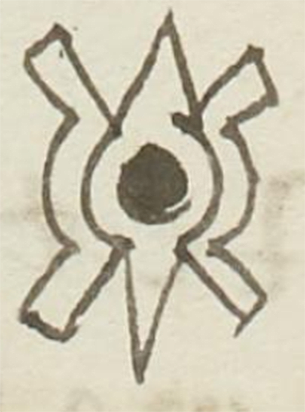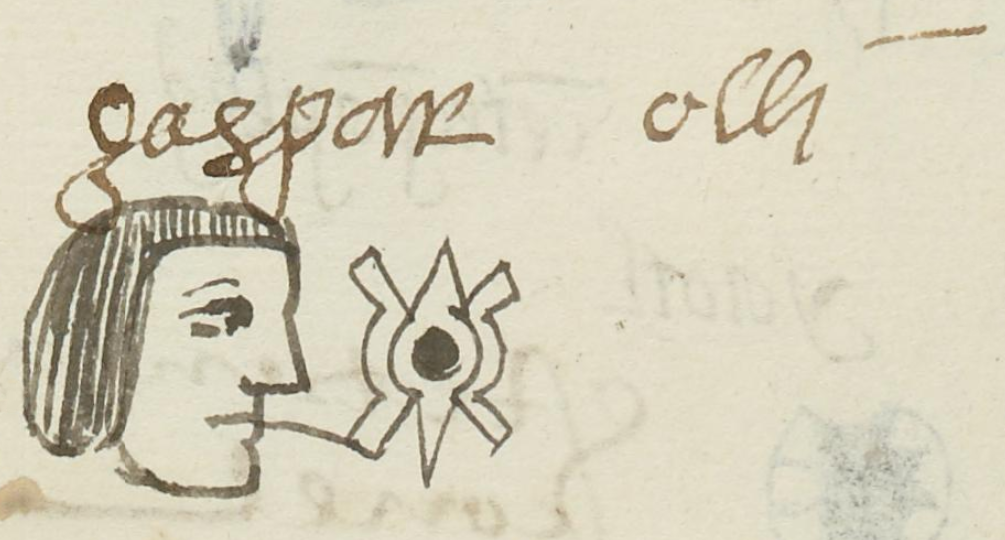Olin (MH639r)
This black-line drawing of the compound glyph for the personal name Olin ("Movement" or "Earthquake," attested here as a man's name) includes the sign for movement (olin) and a black rubber ball (olli) in the center. The long, horizontal line at the end of the gloss could suggest that the name ends with an "n," which would make Olli ("Rubber") into Olin ("Movement"). The movement sign is winged, and it has a central shaft that is pointed at top and bottom. This is attested as a man's name.
Stephanie Wood
As is often the case with these compounds, between dropped and intrusive "n's" and the use of "ll" when "l" is all that is needed, it can be a challenge to see whether the intention is olli or olin. But, here, the framework around the ball would not be necessary if just olli was the intention, and besides that, the framework is so large as to appear to be the more important part. So, the name Olin is preferred in this case. However, some examples of olli appear below in which the ball seems to have the greater emphasis.
Olin was a day name in the 260-day divinatory calendar called the tonalpohualli in Nahuatl. This calendar had a role in various Mesoamerican religions, including the Mixtec.
Stephanie Wood
olli_
Olin
Stephanie Wood
1560
Jeff Haskett-Wood
movement, movimiento, earthquakes, terremotos, temblores, nombres de hombres

ol(li), rubber, https://nahuatl.wired-humanities.org/content/olli
ol(in), movement, https://nahuatl.wired-humanities.org/content/olin
Movimiento, o Temblor
Stephanie Wood
Matrícula de Huexotzinco, folio 639r, World Digital Library, https://www.loc.gov/resource/gdcwdl.wdl_15282/?sp=360.
This manuscript is hosted by the Library of Congress and the World Digital Library; used here with the Creative Commons, “Attribution-NonCommercial-ShareAlike 3.0 License” (CC-BY-NC-SAq 3.0).






